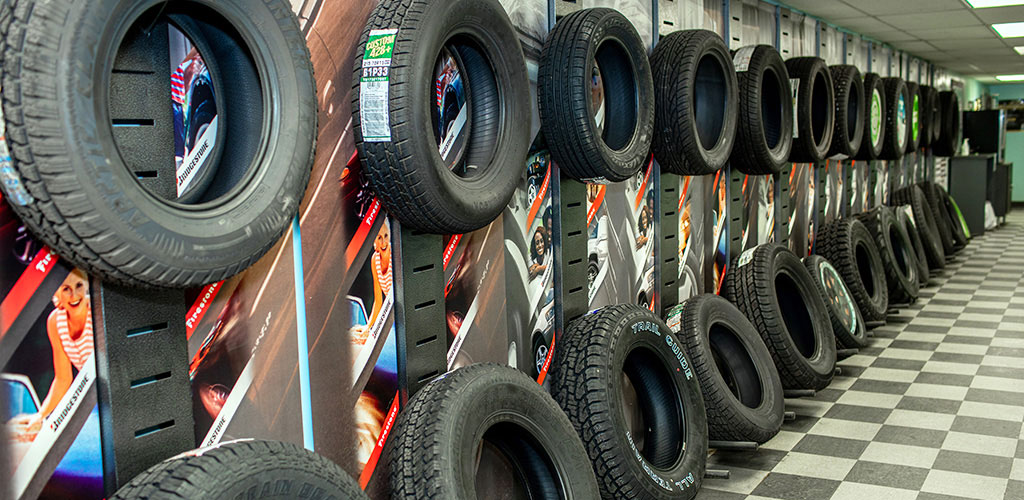Discover Top Quality at Morris Tire: Your Trusted Tire Shop Near Me
Discover Top Quality at Morris Tire: Your Trusted Tire Shop Near Me
Blog Article
The Science Behind Tire Repair and Safety
When it concerns the complex globe of tire maintenance and security, there exists a realm of science that typically continues to be undetected by the ordinary driver - morris tire. The materials that make up a tire, the influence of tire stress on general safety and security, the ramifications of tread wear, the intricate characteristics of tire grip, and the often-overlooked significance of correct wheel positioning all play vital duties in guaranteeing a car runs securely and successfully. As we navigate through the complexities of tire repair and security, it ends up being noticeable that a deeper understanding of these scientific principles is not only valuable yet essential for every single chauffeur on the road
Tire Structure and Capability
What products comprise the make-up of tires, and exactly how do these components contribute to their capability on the roadway? Tires are complicated products, typically made from a combination of rubber substances, textile, steel cables, and other chemical ingredients. The most common sort of rubber used in tires is artificial rubber, which offers longevity and resistance to tear and wear. The material layers, commonly constructed from nylon, polyester, or rayon, supply stamina and stability to the tire framework. Steel cables are included to boost the tire's strength and help it preserve its shape under various road problems.
The rubber compounds supply hold and grip, enabling the tire to stick to the roadway surface and give security throughout acceleration, stopping, and cornering. On the whole, the mindful choice and mix of these materials ensure that tires can execute effectively and securely on different road surfaces and problems.
Impact of Tire Stress on Safety And Security
On the other hand, overinflated tires have much less contact with the roadway surface area, decreasing grip and causing unequal wear on the tire footsteps. Effectively inflated tires additionally play a crucial role in fuel efficiency, as underinflated tires can raise rolling resistance, leading to reduced gas mileage. Regularly examining and keeping the appropriate tire stress not just makes certain safety but additionally prolongs the life expectancy of the tires, conserving on substitute prices in the long run.
Tread Wear and Its Effects
Proper surveillance of tire tread wear is critical for ensuring optimal performance and safety and security when driving. As tires wear down, the deepness of the walk decreases, minimizing the tire's capacity to preserve grip, especially in slippery or damp conditions. The step pattern and deepness play an essential function in transporting water away from the tire to stop hydroplaning and preserving grip when traveling surface.
Uneven wear may suggest problems with tire suspension, inflation, or placement parts. Wear indicators are constructed into the tire walk and come to be visible when the step deepness reaches a specific reduced point, indicating the demand for instant replacement.

Comprehending Tire Traction Characteristics
Checking tire walk wear not just ensures optimum efficiency and security but additionally straight impacts the traction dynamics of the tires on different road surface areas. Tire traction is a crucial aspect of car handling and security, as it figures out the hold in between the tires and the roadway. Grip characteristics differ depending upon roadway problems such as dry pavement, damp roadways, snow, or ice.

Recognizing tire traction characteristics is important for vehicle drivers to adjust their driving behavior according to the road problems. tire shop near me. Routinely checking tire tread deepness and problem can dramatically boost traction performance, guaranteeing more secure driving experiences across various surfaces
Value of Proper Wheel Positioning
Ensuring correct wheel alignment plays a vital role in enhancing car performance and prolonging tire long life. Correct wheel positioning includes readjusting the angles of the wheels to maker requirements, making certain that they are vertical to the ground and alongside each other. When positioning is off, it can bring about irregular tire wear, reduced fuel efficiency, and compromised handling.
Among the crucial advantages of maintaining proper wheel alignment is improved dealing with and stability. Misaligned wheels can create the automobile to draw away, impacting steering control and total driving experience. In addition, appropriate positioning advertises also tire wear, avoiding early tire replacement and reducing maintenance expenses in the long run.

Conclusion
In verdict, the scientific research behind tire fixing and safety is critical for keeping lorry efficiency and making certain motorist safety and security. By comprehending tire composition, pressure, step wear, traction characteristics, and wheel positioning, chauffeurs can prevent mishaps and extend the life-span of their tires.
The materials that compose a tire, the impact of tire stress on total safety, the ramifications of walk wear, the detailed dynamics of tire traction, and the often-overlooked importance of proper wheel placement all play important roles in making certain a vehicle runs securely and successfully. On the various other hand, overinflated tires have less contact with the road surface, decreasing traction and causing uneven wear on the tire treads. Regularly checking and keeping the right tire pressure not just ensures safety however also extends the life expectancy of the tires, saving on substitute expenses in the lengthy run.
Keeping an eye on tire walk wear not only ensures optimum performance my response and safety yet additionally directly impacts the traction dynamics of the tires on various road surface areas. Tire traction is an important element of car handling and safety, as it figures out the hold between the tires and the roadway.
Report this page